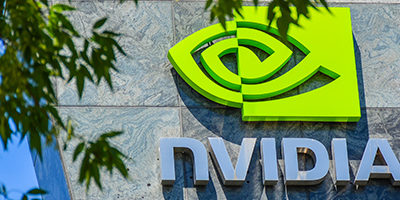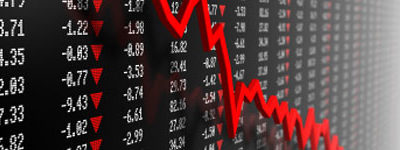%
Jubak’s Picks Performance 1997-2019
Jubak’s Picks
Buy and hold? Not really.
Short-term trading?
Not by a long shot.
So what is the stock-picking style of The Jubak’s Picks portfolio?
Click to expand...
Click to View the Jubak’s Picks Portfolio
I try to go with the market’s momentum when the trend is strong and the risk isn’t too high, and I go against the herd when the bulls have turned piggy and the bears have lost all perspective. What are the results of this moderately active — the holding period is 12 to 18 months — all-stock portfolio since inception in May 1997? A total return of 584% as of December 31, 2019. That compares to a total return on the S&P 500 stock index of 335% during the same period.
%
Top 50 Stocks Performance 2019
Top 50 Stocks
This long-term, buy-and-holdish portfolio was originally based on my 2008 book The Jubak Picks.
Trends that are strong enough, global enough, and long-lasting enough to surpass stock market averages.
Click to expand...
Click to view the Top 50 Stocks Portfolio
In The Jubak’s Picks Portfolio I identified ten trends that were strong enough, global enough, and long-lasting enough to give anyone who invested in them a good chance of beating the stock market averages.
To mark the publication of my new book on volatility, Juggling with Knives, and to bring the existing long-term picks portfolio into line with what I learned in writing that book and my best new ideas on how to invest for the long-term in a period of high volatility, I’m completely overhauling the existing Top 50 Picks portfolio.
You can buy Juggling with Knives at bit.ly/jugglingwithknives
%
Dividend Income Performance 2021
Dividend Income
Every income investor needs a healthy dose of dividend stocks.
Why bother?
Why not just concentrate on bonds or CDs?
Click to expand...
Click to view the Dividend Income Portfolio
Because all the different income-producing assets available to income investors have characteristics that make them suited to one market and not another. You need all of these types of assets if you’re going to generate maximum income with minimum risk as the market twists and turns.
For example: bonds are great when interest rates are falling. Buy early in that kind of market and you can just sit back and collect that initial high yield as well as the capital gains that are generated as the bonds appreciate in price with each drop in interest rates.
CDs, on the other hand, are a great way to lock in a yield with almost absolute safety when you’d like to avoid the risk of having to reinvest in an uncertain market or when interest rates are crashing.
Dividend stocks have one very special characteristic that sets them apart from bonds and CDs: companies raise dividends over time. Some companies raise them significantly from one quarter or year to the next. That makes a dividend-paying stock one of the best sources of income when interest rates start to rise.
Bonds will get killed in that environment because bond prices will fall so that yields on existing bonds keep pace with rising interest rates.
But because interest rates usually go up during periods when the economy is cooking, there’s a very good chance that the company you own will be seeing rising profits. And that it will raise its dividend payout to share some of that with shareholders.
With a dividend stock you’ve got a chance that the yield you’re collecting will keep up with rising market interest rates.
But wouldn’t ya know it?
Just when dividend investing is getting to be more important—becoming in my opinion the key stock market strategy for the current market environment—it’s also getting to be more difficult to execute with shifting tax rates and special dividends distorting the reported yield on many stocks.
I think there’s really only one real choice—investors have to pull up their socks and work even harder at their dividend investing strategy. That’s why I revamped the format of the Dividend Income portfolio that I’ve been running since October 2009. The changes aren’t to the basic strategy. That’s worked well, I think, and I’ll give you some numbers later on so you can judge for yourself. No, the changes are designed to do two things: First, to let you and me track the performance of the portfolio more comprehensively and more easily compare it to the performance turned in by other strategies, and second, to generate a bigger and more frequent roster of dividend picks so that readers, especially readers who suddenly have a need to put more money to work in a dividend strategy, have more dividend choices to work with.
Why is dividend investing so important in this environment? I’ve laid out the reasons elsewhere but let me recapitulate here. Volatility will create repeated opportunities to capture yields of 5%–the “new normal” and “paranormal” target rate of return–or more as stock prices fall in the latest panic. By using that 5% dividend yield as a target for buys (and sells) dividend investors will avoid the worst of buying high (yields won’t justify the buy) and selling low (yields will argue that this is a time to buy.) And unlike bond payouts, which are fixed by coupon, stock dividends can rise with time, giving investors some protection against inflation.
The challenge in dividend investing during this period is using dividend yield as a guide to buying and selling without becoming totally and exclusively focused on yield. What continues to matter most is total return. A 5% yield can get wiped out very easily by a relatively small drop in share price.
Going forward, I will continue to report on the cash thrown off by the portfolio—since I recognize that many investors are looking for ways to increase their current cash incomes. But I’m also going to report the total return on the portfolio—so you can compare this performance to other alternatives—and I’m going to assume that an investor will reinvest the cash from these dividend stocks back into other dividend stocks. That will give the portfolio—and investors who follow it—the advantage of compounding over time, one of the biggest strengths in any dividend income strategy.
What are some of the numbers on this portfolio? $29,477 in dividends received from October 2009 through December 31, 2013. On the original $100,000 investment in October 2009 that comes to a 29.5% payout on that initial investment over a period of 39 months. That’s a compound annual growth rate of 8.27%.
And since we care about total return, how about capital gains or losses from the portfolio? The total equity price value of the portfolio came to $119,958 on December 31, 2012. That’s a gain of $19,958 over 39 months on that initial $100,000 investment or a compound annual growth rate of 5.76%.
The total return on the portfolio for that period comes to $49,435 or a compound annual growth rate of 13.2%.
How does that compare to the total return on the Standard & Poor’s 500 Stock Index for that 39-month period? In that period $100,000 invested in the S&P 500 would have grown to $141,468 with price appreciation and dividends included.) That’s a total compounded annual rate of return of 11.26%.
That’s an annual 2 percentage point advantage to my Dividend Income portfolio. That’s significant, I’d argue, in the context of a low risk strategy.
Portfolio Related Posts
More news likely to keep AI rally going in China–adding Alibaba to my portfolios
Ant Group, backed by Alibaba’s Jack Ma, has announced that it has used Chinese-made semiconductors to train AI models that would cut costs by 20%. Ant Group, formerly Ant Financial and the owner of Alipay, the world’s largest digital payment platform, used Chinese chips, including from affiliate Alibaba Group and Huawei Technologies, to train models using the so-called Mixture of Experts machine learning approach.(That technique divides tasks into smaller sets of data, very much like having a team of specialists who each focus on a segment of a job.) The results are similar to those from last-generation-but-one Nvidia (NVDA) chips like the H800. The models are Ant’s entry into a race between Chinese and U.S. AI companies set off when China’s DeepSeek demonstrated models that can be trained for far less than the billions invested by U.S. companies such as OpenAI and Alphabet’s Google. Ant published a research paper this month that claimed its models at times outperformed those from Meta Platforms (META) on specific benchmarks. The news is likely to be enough to keep China’s AI stock rally at a healthy boil.
Getting ahead of selling in this market is like playing Whac-a-mole–2 more sells
I’m selling Danaher (DHR) and RTX (RTX) out of my Jubak Picks and Dividend portfolios, respectively, in an attempt to get ahead of some of the likely fallout from policy moves by the Trump Administration. And in order to sit out as much of current market volatility as is possible.
Please watch my new YouTube video: Retail flashing red
Today’s video is Retail Flashing Red. In the past week we’ve seen a cascade of negative news from the retail sector. Macy’s announced projected comparable store sales would be “down slightly” for 2025, and Target expected flat comparable store sales for 2025. Last week, Target’s stock was down 7.4% and Best Buy fell 11.5%. I own Costco and Wal-Mart, (the best retail stocks at the moment) but I will be selling them this week. Costco, which I bought in 2022, is up 69% since I purchased it. I’ll be taking my profits and eliminating my exposure to the sector, which is a good place to be while tariffs and a volatile economy threaten retail stocks.
Will Nvidia’s earnings this week move the market?
I expect the earnings report of the week will be Nvidia’s (NVDA) report after the close on Wednesday, February 26. For the fiscal quarter ending January 2025, the consensus EPS forecast is $0.79. The reported EPS for the same quarter last year was $0.49. Analysts expect NVIDIA’s earnings to grow 43.68% next year from $2.77 to $3.98 per share.
Buying more Tencent ADRs for my portfolios
On Monday, March 24, I added these Tencent ADRs (TCEHY) to my Jubak Picks Portfolio here and to my Volatility Portfolio on my subscription site JubakAM.com.
Even the best retail stocks aren’t beating fears of a slowdown: I’m selling Walmart and Costco
With fears of an economic slowdown punishing the market today, I think it’s more than time to sell my Jubak Picks positions in Walmart (WMT) and Costco Wholesale (COST) even though they are the two best companies in the retail sector.
QQQ, which tracks NASDAQ tech stocks, closes below 50-day MA–2 days before NVDA earnings
The Invesco QQQ ETF (QQQ), which tracks the tech-heavy Nasdaq 100 index (NDX), closed below its 50-day moving average on Monday for the first time in just over three weeks. The ETF was down another 0.83% as of 3:30 p.m. New York time on Tuesday.
AMD’s drop on huge revenue growth exemplifies risks in the tech sector
Yesterday, February 4, after the close of trading Advanced Micro Devices (AMD) reported record revenue growth for the fourth quarter. The chipmaker even reported growth in market share at the expense of rival Intel (INTC).
Yet in after-hours reading the stock dropped 8.80%. Today’s regular session confirmed the tumble with a 6.27% tumble. The problem for AMD, revenue growth in the company’s data center unit, which competes in the market for AI chips with Nvidia (NVDA) revenue slowed. The problem for the tech sector as a whole, and especially AI stocks, is that the dip in the growth rate for data center revenue was to a “disappointing” 69% rate. That’s only disappointing in comparison to the a year-over-year growth rate of of 122% that the company reported for the third quarter of 2024. This raises the important question for AI and tech stocks: Are current valuations for the stocks predicated on unachievable exceptions for extraordinarily high growth rates for unrealistically long time periods?










